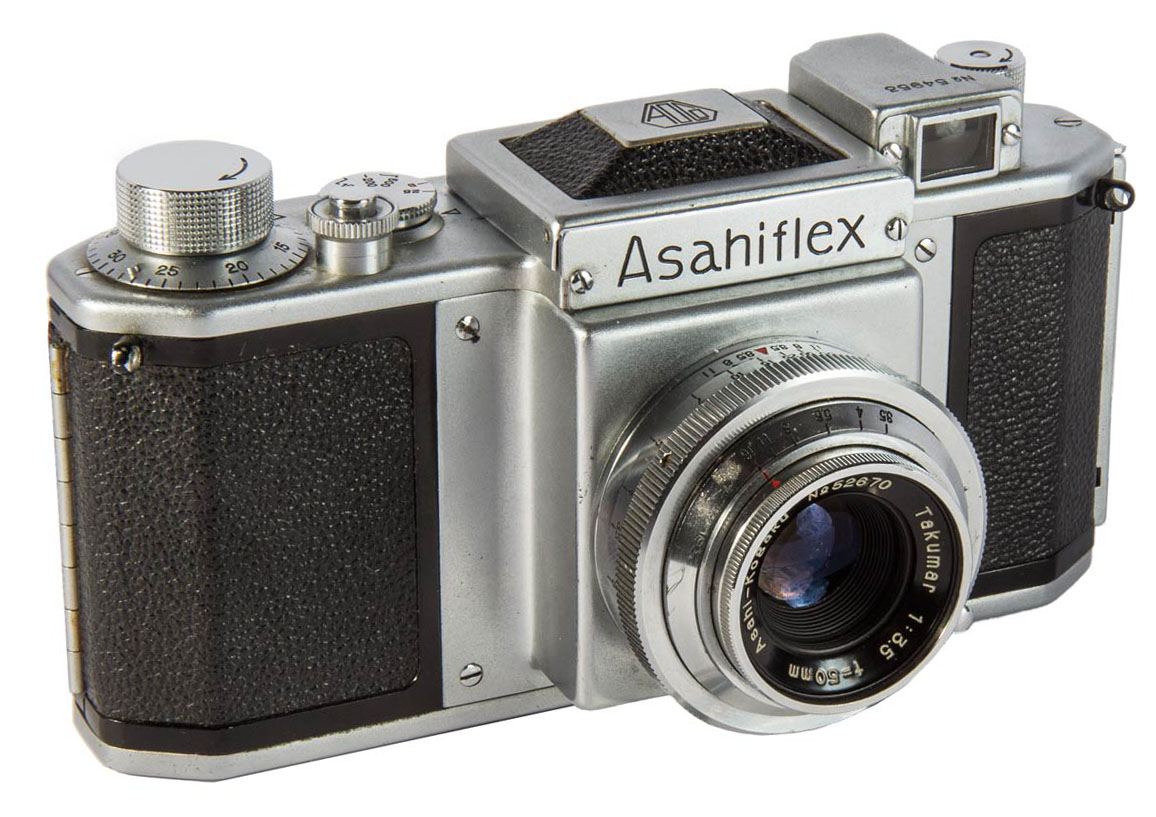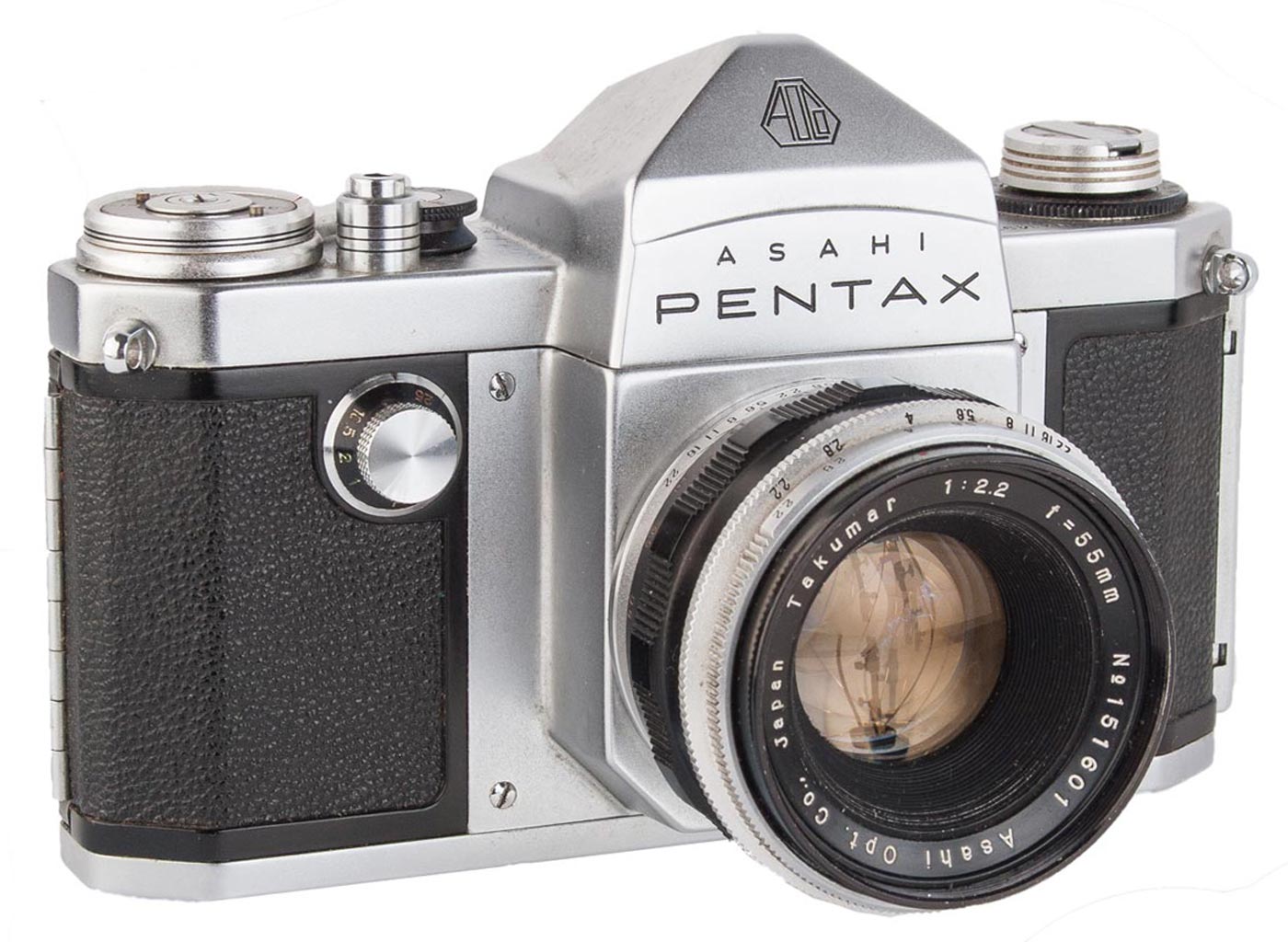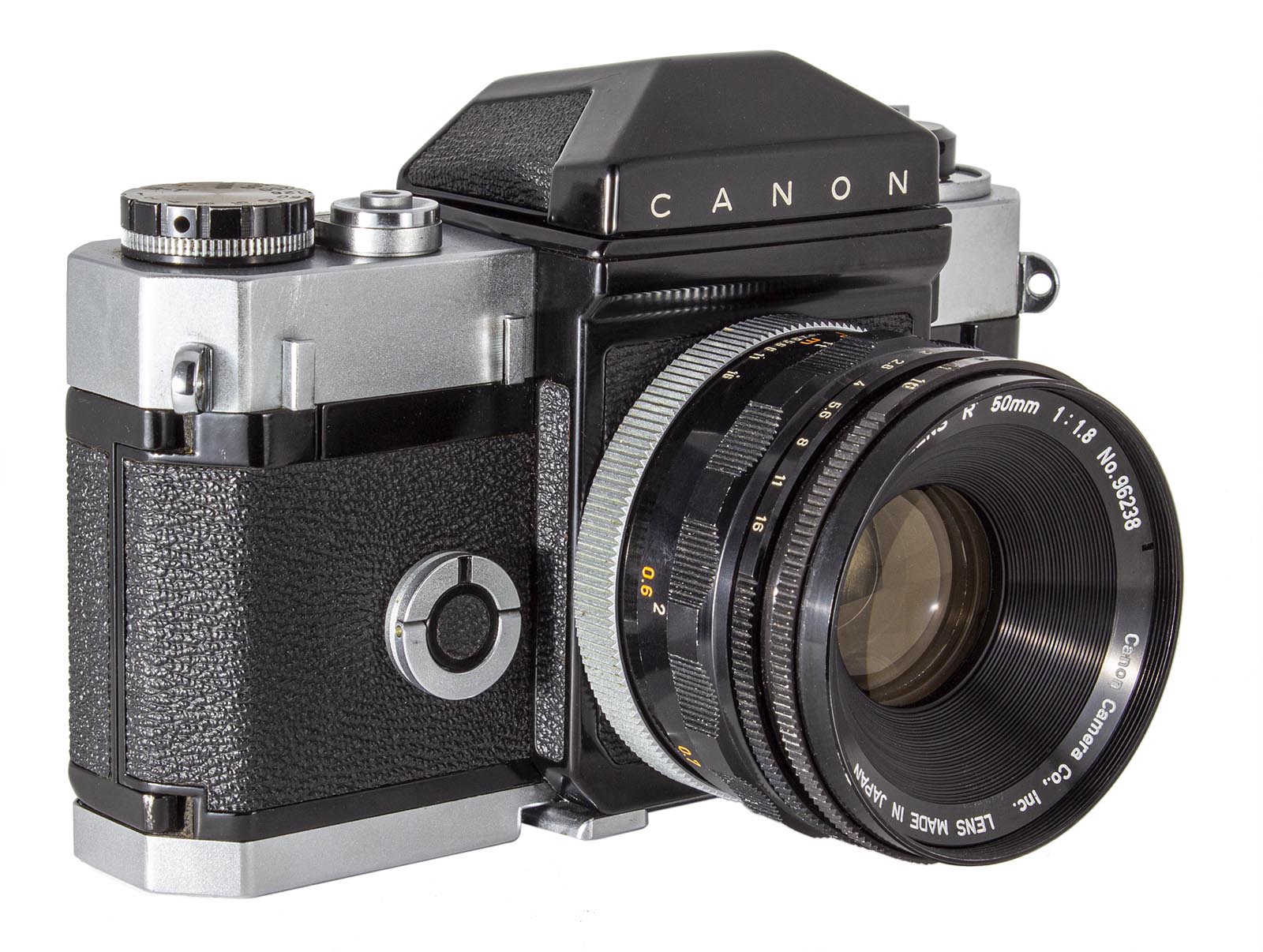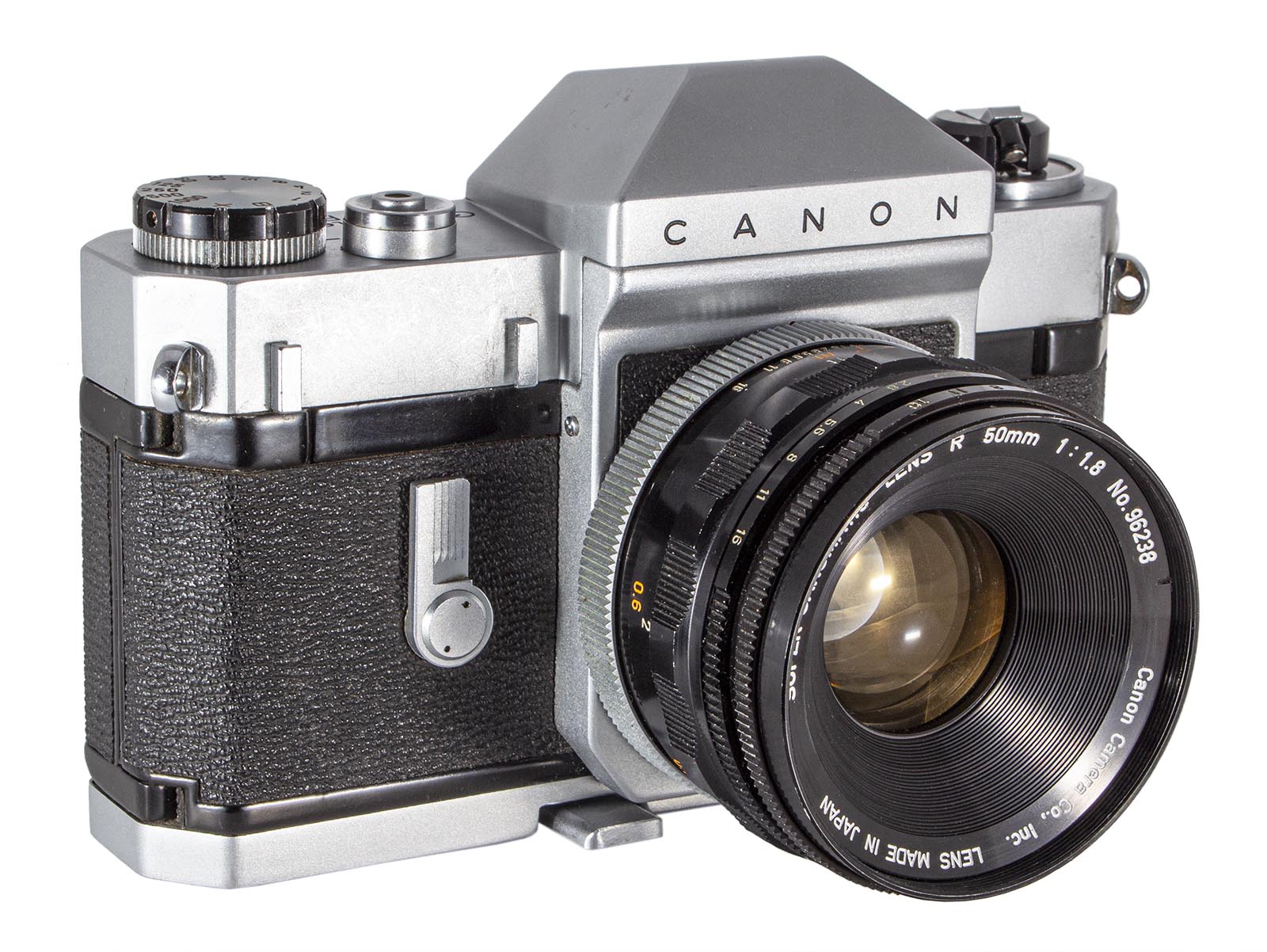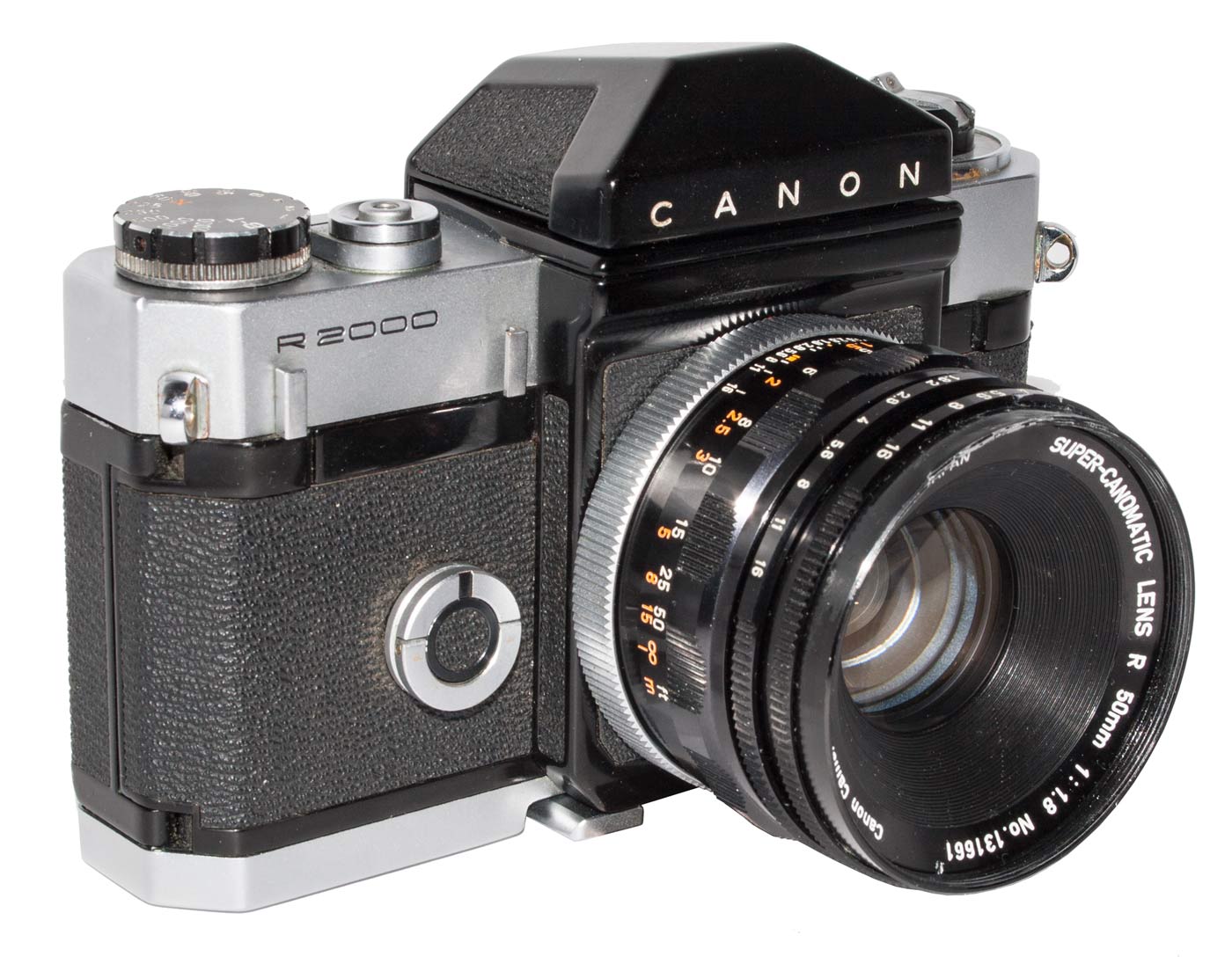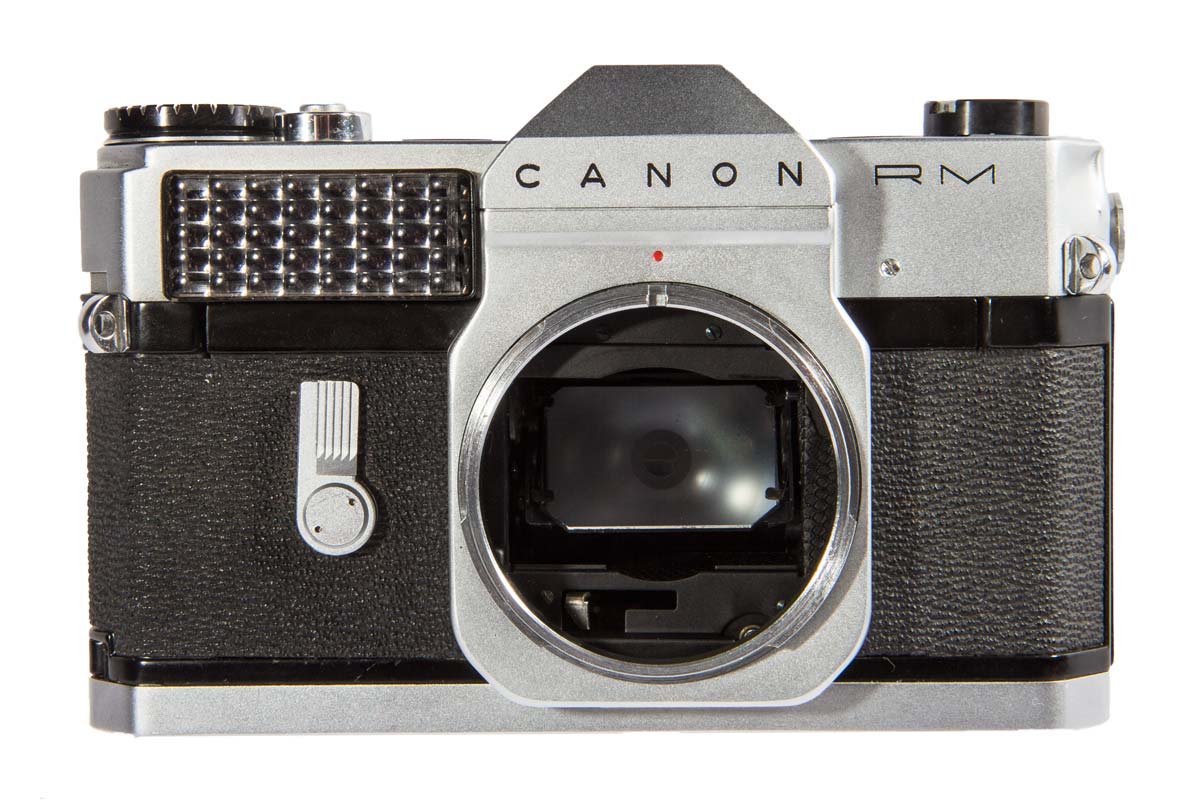I found this beautiful Asahiflex IIb several years ago when looking for a Canon camera and could not resist it. The Asahiflex, made by Asahi Optical Corporation, later to be called Pentax, is considered to be the first single lens reflex built and marketed in Japan.
I found this Asahi Pentax the same way. I went to look at a Canon camera and asked if the person had any other cameras for sale and he held out this mint copy of this revolutionary camera.
The Canonflex Series
The idea of a single lens reflex camera is not new. I fact it goes back centuries. When the camera obscura was reduced to a box with a 45 degree mirror reflecting the image up to a ground glass the basic design was realized and that was in the 1800’s.
The first company to create a single lens reflex for 35mm film was a German company, “Ihagee Camera Company”. They introduced the Kine Exacta at the Leipzig Spring Trade Fair in 1936 to much acclaim. This camera used a mirror to reflect the image up to a ground glass which could be viewed with a built in pop up lens for focusing. The image, unfortunately, was reversed left to right.
The next development came from Zeiss Ikon of Dresden who introduced the Contax S in 1949. This camera used a pentaprism eye level finder in which the image reversal was corrected.
The next development actually began in Japan in 1919 with the establishment of Asahi Kogaku Goshi Kaisha to produce lenses for eye glasses. In the 1930’s they began to make lenses for various camera
manufacturers and in 1938 the company changed its name to ‘Asahi Optical Company’.
As Japan become embroiled in the Asian Wars and finally the Second World War Asahi Optical received contracts to produce optical devices for the Japanese military which it continued to do until the end of the war.
During the American occupation of Japan and the ramp up to the Korean war the popularity of Japanese cameras increased and there was a demand for them. Both Canon and Nikon were riding this demand by offering excellent rangefinder cameras based on German designs. By 1950 Asahi began to consider making a camera of its own and started research into the design of a camera that could compete in this established market.
Work began in 1950 on the design of the new camera and a year later a prototype 35mm camera was produced. It was a waist level single lens reflex camera with a mirror that moved up out of the way with a press of the shutter button. Because of problems with the laterally reversed image on the ground glass a conventional viewfinder was included on the top deck as well. This camera was finally brought to market in 1952 as the Asahiflex I. This was the first Japanese 35mm reflex camera and with it the development of 35 mm cameras moved to Japan.
The original Canonflex introduced by Canon in May of 1959 with an R 50mm f.1.8 lens. On the front of the body are the two brackets to hold a clip on light meter which could be purchased as an accessory for this camera.
Development continued at Asahi and the following year they came out with the Asahiflex IIb which introduced the instant return mirror. This was a major innovation and another first for the Japanese camera industry. An attempt at the instant return mirror had been made in 1947 in the Hungarian Duflex camera but it was unreliable and very few were made. The Asahiflex IIb was the first successful use of such a mirror on a mass produced camera.
1957 saw the introduction of the Asahi Pentax which incorporated a pentaprism over the focusing sceen which corrected the lateral reversal of the image and allowed for eye level viewing. The camera was unique in that it had a pentaprism viewfinder, and instant return mirror, a microprism focusing screen, film rewind crank and a thumb lever film advance.
Other Japanese camera makers were quick to take up the reflex camera. After Asahi the first was Miranda with the Miranda T in 1955 followed Topcon’s Topcon R in 1957 and by Minolta’s SR-2 in 1958. And these were not all. By the time Canon got to releasing the the Canonflex in May of 1959 there were 8 SLR models available.
Canon is a conservative company and they watch the market carefully. However, when they finally move they do so with excellent products. The Canonflex when finally introduced was an excellent camera. It was a handsome, well built and innovative. Again, the trigger winder on the bottom of the camera was employed as on some of their rangefinder cameras. They seemed to really like this arrangement.
Unfortunately for Canon, the year they introduced the Canonflex Nikon came out with the Nikon F. However, Nikon had a full suit of accessories for their camera, much more than Canon had, and the “F” became the choice of professionals around the world. Nikon established a leading position which it took Canon many years to overcome.
Be that as it may, the Canonflex had an automatic diaphragm that allowed for focusing at full aperture. This required communication between lens and camera which was not possible with the M-39 mount being used on their rangefinder cameras. As a result the Canonflex had a new lens mount, the R mount, which required new lenses. These were the “R” series lenses, most often called “Super-Canomatic” lenses.
Canon very quickly realized that the Canonflex was not selling well and they followed up on the Canonflex very rapidly with improved models and with thumb lever film advance. But it was to no avail. The whole story is in the numbers: Canon manufactured about 17,000 “Flexes” while Nikon made 852,000 F’s.
The models they came out with were four in number and were:
| Camera Name (and finish) | Date of Introduction |
| Canonflex (Chrome) | May 1959 |
| Canonflex R2000 (Chrome) | September 1960 |
| Canonflex RP (Chrome) | September 1960 |
| Canonflex RP (Black) | |
| Canonflex RM (Chrome) | April 1962 |
| B&H Canonflex RM (Chrome) | April 1962 |
| Canonflex RM (Black) |
The “R” lenses had a breech-lock system that was basically not changed until the introduction of the EOS lenses decades later. They were not interchangeable with FL, FD and FDn lenses because of the linkages on the back of the lens however the lugs on the breech-lock ring are compatible. They would all fit on each others mount but caution should be exercised with “R” series lenses. They should not be mounted on FL or FD cameras.
The Canonflex Series Cameras in the Collection
This website is the work of R. Flynn Marr who is solely responsible for its contents which are subject to his claim of copyright. User Manuals, Brochures and Advertising Materials of Canon and other manufacturers available on this site are subject to the copyright claims and are the property of Canon and other manufacturers and they are offered here for personal use only.

